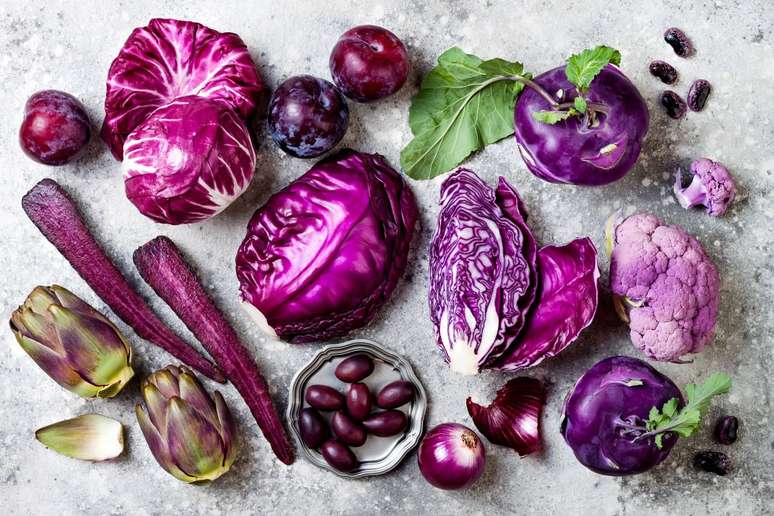Discover the main advantages of food coloring!
Credit: Food coloring offers health benefits (Image: Shutterstock)
It is very common to hear that the greater the color variation in the dish, the healthier the food. According to nutritionist Glauce Lamoglie de Carvalho, each color represents the predominance of certain nutrients and phytochemicals, active principles contained in foods capable of providing benefits and preventing disease. Check out what’s in each color below!
red
Foods rich in lycopene, a pigment that acts as a cellular antioxidant.
Representatives: persimmon, cherry, raspberry, guava, watermelon, strawberry, nectarine, pitanga, pomegranate and tomato, as well as beets and chili peppers.
yellow and orange
Foods rich in beta-carotene, also known as pro-vitamin A, which acts as an antioxidant against free radicals and in the maintenance of tissue and hair; benefits night vision and enhances immunity.
Representatives: pineapple, mango, passion fruit, melon, corn, pumpkin, plum, cashew, star fruit, apricot, carrot, orange, papaya, yellow pepper and tangerine.
whites
The color is the result of flavin, which indicates foods rich in minerals, such as calcium and phosphorus, which help maintain bones and teeth, and carbohydrates and vitamin B6, which promote cellular respiration and help protein metabolism.
Representatives: garlic, banana, potato, onion, cauliflower, white kidney beans, apple, pear, heart of palm, chayote, mushroom, cassava, turnip and radish.
viola
Foods rich in anthocyanins, a type of pigment linked to the presence of vitamin B1. This vitamin is related to disposition; It is essential in the process of turning the carbohydrates and other nutrients we eat into energy. It helps in the proper functioning of the nervous system, muscles and heart.
Representatives: artichoke, plum, blackberry, eggplant, black bean, fig, jabuticaba, grapes and red cabbage.
brown
Foods rich in fiber help in good intestinal functioning and ensure less fat absorption and control of sugars. Additionally, some foods in this group, such as Brazil nuts, contain selenium, an antioxidant that acts as a vasodilator and blood thinner.
Representatives: whole grains and oilseeds.
greens
The color of these foods is the result of chlorophyll, known as a powerful source of cellular energy. But these foods also contain substantial amounts of many other nutrients, such as beta-carotene and lutein, folate, vitamins C and E, calcium, iron, and potassium.
Representatives: leaves such as chard, lettuce, kale, parsley, watercress, chicory, collard greens, spinach, arugula, escarole and basil, but also avocado, zucchini, okra, green peppers, broccoli, green beans, kiwi, peas, lemon and cucumber .

Source: Terra
Rose James is a Gossipify movie and series reviewer known for her in-depth analysis and unique perspective on the latest releases. With a background in film studies, she provides engaging and informative reviews, and keeps readers up to date with industry trends and emerging talents.

![UN SI Grand Soleil in advance: Ludo trap … What awaits you on the week of October 13, 2025 [SPOILERS] UN SI Grand Soleil in advance: Ludo trap … What awaits you on the week of October 13, 2025 [SPOILERS]](https://fr.web.img6.acsta.net/img/7b/c9/7bc95a441d5f495ce3a7f05cbfbc580e.jpg)



